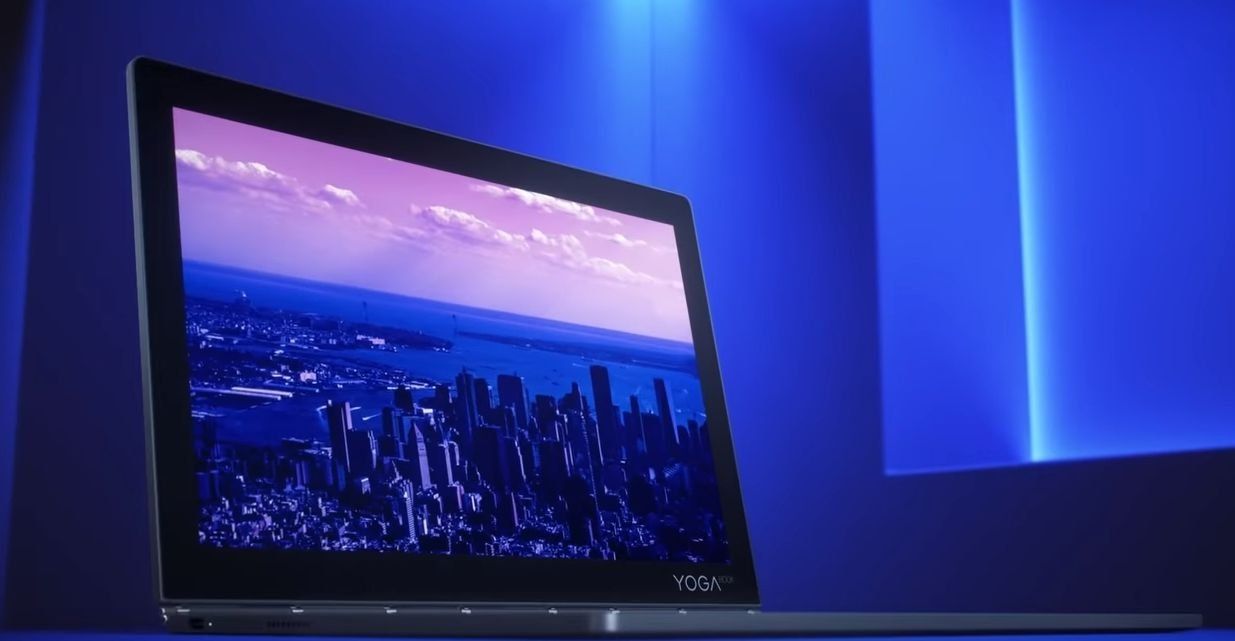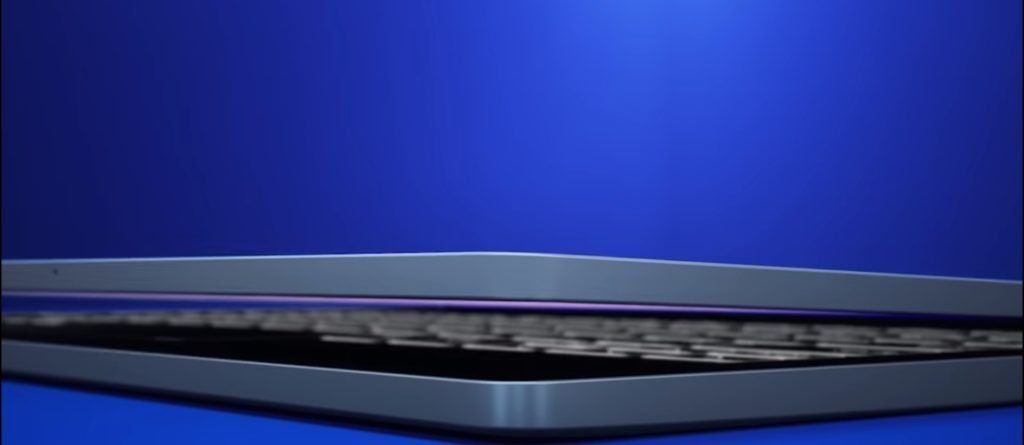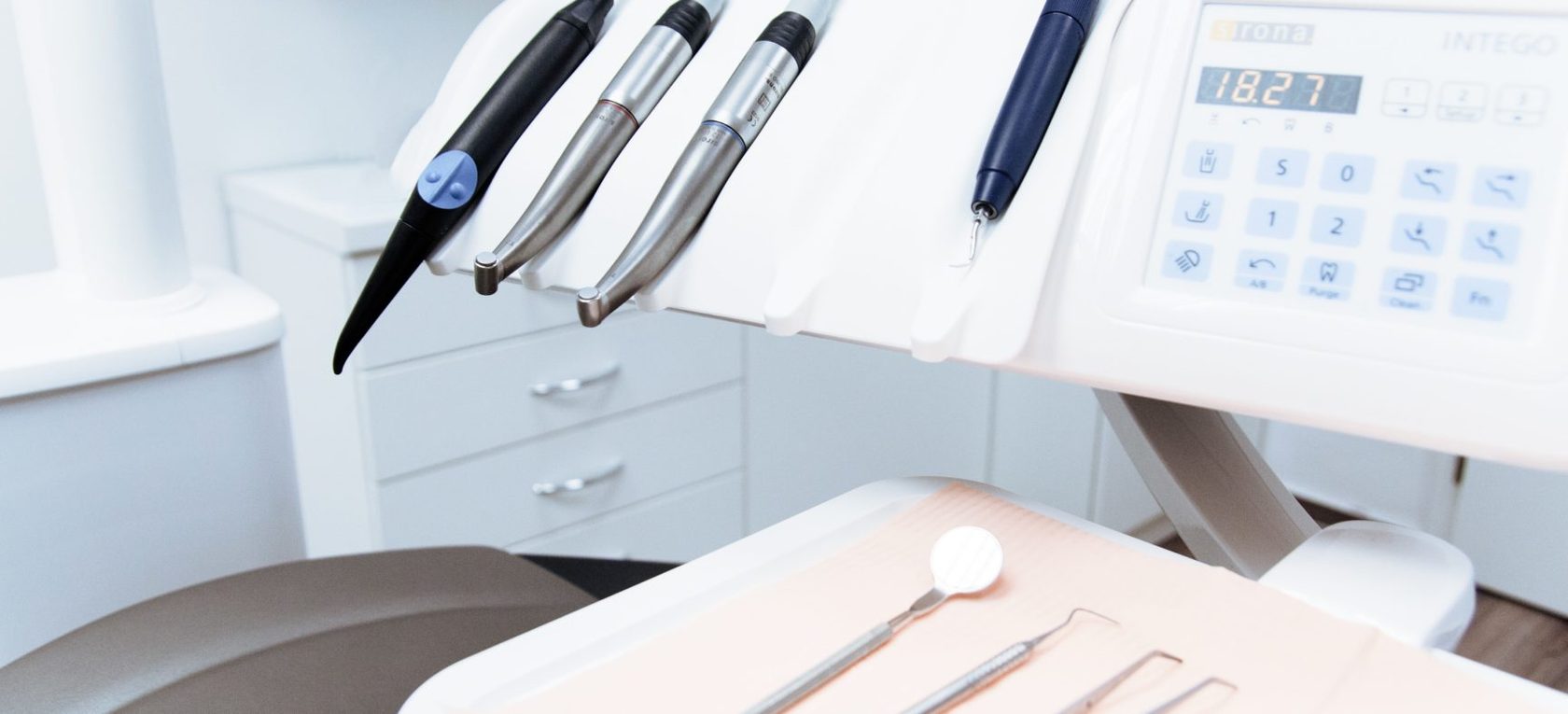So versatile: Lenovo Yoga Book C930

Lenovo Yoga book C930 is a successor of the line of device that combines the properties of a tablet and a laptop, YogaBook, presented by Lenovo in 2016.
Brief background
Since the 2016 YogaBook did not have the market success that Lenovo desired, it also had some practical disadvantages, such as:
- The Wacom touch surface, which, if desired, could replace the keyboard and graphic panel for drawing, did not work quite correctly;
- Users complained about problems with opening the device - there were no special gaps on the device that could be pried with a fingernail to open it;
- Delayed vibration feedback on the keyboard, which in its behavior resembled vibration feedback on cheap Chinese smartphones. And much more.
But, as we can see, Lenovo did not give up, and in 2018 presented the world with the Lenovo Yoga Book C930, in which they tried to remove all the known shortcomings, as well as introduce something new.
In our review, we will analyze with you:
- Design and functionality;
- Software;
- Main characteristics;
- Cost;
- Advantages and disadvantages.
Design, functionality and display



When closed, this device resembles two tablets lying on top of each other, hinged together, about 1 cm thick and weighing 775 g. To open the laptop, Lenovo has come up with a clever way - you just need to knock on it twice, after which the lid rises and we can easily open the device.
This feature, apparently, was added after complaints from users of the YogaBook 2016, who expressed their dissatisfaction with the inconvenience of opening.
The paradox is that in the Yoga Book C930, manual opening slots were never added. Taking into account the good magnets, it will still be inconvenient to open it with your hands.
Opening the laptop, our gaze is presented with two displays with a diagonal of 10.8 inches:
The first of which is an LCD touchscreen display with an IPS matrix, which has a high resolution of 2560x1600 pixels and excellent color rendering from various viewing angles.
The second is a Full HD touchscreen display with "electronic ink" technology - E ink. This technology provides incredible responsiveness when using your fingers or stylus. For the convenience of working with this technology, the following software is preinstalled on the device:
- E Ink Settings;
- E Ink reader;
- E Ink note;
- E Ink Keyboard.

With the stylus, which most often comes with the device, you can interact with both the first screen and the second. Compared to the old, slightly malfunctioning Wacom panel that was in the 2016 YogaBook, E ink technology is a real breakthrough in the field of touch surfaces.
Thanks to her, you can use the Yoga Book C930 as:
- A book for notes. Using a virtual keyboard with its own AI, which allows the device to remember your writing style and set the location and size of the keys for your convenience;
- E-Book Reader - E-Book; Supports formats: PDF, MOBI, E-Pub. While reading, you can easily put notes, underlines, etc.
- Drawing tablet using Bluetooth - stylus that supports about 4100 options and methods of pressure, which in turn gives it incredible precision;
- Classic laptop, for appropriate use: surfing the Internet or socializing. networks, messengers, etc.
With a hinge that holds the two displays together, allowing you to manipulate the position of the screens 360 degrees, you can shape it to suit your needs.
It is noteworthy that when the device is folded in half, the inactive display will be turned off to prevent unwanted clicks. In this case, users are advised to put something underneath or use covers to avoid scratches on the screen that will not be used.
Software
Upon purchase, the following software will be installed on the device:
- One-year subscription to Microsoft's Office 365 personal office suite. Unfortunately, this is only for LTE models;
- Lenovo Vantage. An application that will allow you to personalize and simplify the use of your device, as well;
- Update drivers and other system programs.
- Assess the health of the system, perform various checks and carry out diagnostics.
- Manipulate the battery to help you extend battery life.
- Be notified of exclusive and new products from Lenovo.
- Search and purchase of accessories that fit your gadget.
- Microsoft OneNote. A program that acts as a notebook, and will also allow you to create notes in various formats: video, photo, audio;
- Microsoft RDX;
- Dolby Atmos. This technology gives the sound of your device surround, rich and high quality sound.
Main characteristics
Here we will give a short table of characteristics and we will analyze them in more detail below.
| Main characteristics | Lenovo Yoga Book C930 |
|---|---|
| Display 1 | Resolution 2560x1600, IPS-matrix, touchscreen, diagonal 10.8. |
| Display 2 | Resolution 1920х1080, E-ink, touch, diagonal 10.8 |
| CPU | 2-core Inlet Core M3-7Y30, 1.6 GHz. |
| Video card | Intel HD Graphycs 615, 2GB. System and 128MB. Own memory |
| Slots and slots | Two ports USB 3.1 (Gen 1) type C, slot for microSD / sim card (only for LTE models |
| Storage device | 256GB SSD card. |
| Battery | 36Wh. |
| Weight | 775gr. |
| Thickness | Folded 10mm. |
| WIFI | WiFi 802.11AC. |
| Bluetoth | bluetooth 4.3 |
| Colour | Gray. |
| Sound card | Dolby Atmos. |
| OS | Windows 10 home 64-bit |
| Body material | Magnesium-aluminum alloy |
CPU
It is also worth paying attention to the fact that Lenovo Yoga Book C930 is available with several types of processors, namely:
- Yoga Book C930 with i5-7Y54 processor;
- Yoga Book C930 with Intel Core M3-7Y30 processor.
I5-7Y45 processor
At the time of the tests, this processor showed a rather low performance. Has 2 cores with 4 threads and 5 watts of power capacity. But despite this, some advantages can be noted. Ability to support 4K at 60 Hz. Clock rate with 4 threads is 3.2 GHz in Turbo mode. TDP (maximum power consumption) - 4.5 watts.
Intel Core M3-7Y30 processor
In contrast to the previous processor, Intel Core M3-7Y30 is strikingly different, in its performance, for the better. High-performance chip with two cores and a clock rate of 1-2.6 GHz.
There is also support for Intel HD Graphics 615 GPU. TDP is 4.5 watts. Has a passive cooling method. This means that the processor does not have its own cooler, but is cooled only by air circulation in the device. It is worth noting that the vast majority of YogaBook C930 units are released with this processor.
Video card
Responsibility for graphics processing is borne by the integrated Intel HD Graphics 615, which has 2GB. system and 128 MB. own memory. Has a fairly low performance.
Not to say that this video card will amaze you with its performance. Indeed, in addition to reading, drawing and all of the above capabilities of this gadget, you can entertain yourself, well, perhaps, with some casual games.
Battery
The battery has a capacity of 36 Wh, which allows it to work for no less than 10 hours.Great for long journeys or flights with moderate use. Tests have shown that the battery of this device supports 4-5 hours of continuous watching movies or other video content.
Connectors
Turning the Yoga Book C930 in your hands, you can see a poor assortment of connectors, quite typical for netbooks:
- MicroSD / SIM card slot (SIM card is only supported by LTE model);
- Two USB1 (Gen 1) type C ports.
Volume button and power button.
Memory
And also Lenovo Yoga Book C930 has a built-in 256 GB SSD card and 4 GB RAM.
Stereo system

Quite good speakers that are located on the sides of the device. They are able to produce quite loud and clear sound thanks to Dolby Atmos technology. Considering the dimensions of this device, such sound is a nice bonus.
Advantages and disadvantages
- Compactness and lightness. The YogaBook C930 can easily fit into a backpack, purse, briefcase or briefcase.
- The design of the device that allows you to give the gadget any position convenient for you.
- A huge amount of various software that will help you personalize the device as much as possible and simplify the work with it.
- Lenovo Yoga Book C930 is equipped with a unique security system. Namely, a high-precision fingerprint scanner. It protects your data against security-compromising malware.
- The magnesium-aluminum alloy from which the case is made is distinguished by an average level of strength, corrosion resistance and good moisture resistance.
- Lack of 3.5 mm jack. for headphones. Listening to music, watching movies, etc., is available through Bluetooth headphones or built-in speakers.
- There are no classic USB connectors, due to which the accessory connection becomes available, again, via Bluetooth or built-in USB-A and USB-C.
- Although Lenovo promised a 10-hour workday, continuous use such as watching movies, videos, and the like reduced the battery life to 4-5 hours. Most likely, you won't be able to use this gadget for work for a long time.
- Lack of specialized clearances for manual opening of the device.
- No matter how beautiful and innovative the new "chip" looks with an automatic lifting of the laptop lid when you double-tap it, it still slows down from time to time. This happens about 2 times out of 10.
- Due to the fact that the processor has a passive cooling method, at the same time, it has to display an image on two displays at once, the responsiveness and smoothness of the system may upset you at times. Although given the purposes for which this device was invented and assembled, it is unlikely that you will encounter this inconvenience often.
- The multitouch function does not always work correctly, which makes the screen respond to double clicks.
The cost
You can buy this device for about $ 1000. To put it mildly, the Yogabook C930 is a bit overpriced as the price-performance ratio is slightly uneven. Considering that for such a price, a mouse does not go with the gadget, and also a stylus may not always be included in the kit, such a price looks absurd at all.
new entries
Categories
Useful
Popular articles
-

Top rating of the best and inexpensive scooters up to 50 cubic meters in 2024
Views: 97661 -

Rating of the best materials for noise insulation for an apartment in 2024
Views: 95022 -

Rating of cheap analogues of expensive drugs for flu and colds for 2024
Views: 91750 -

The best men's running shoes in 2024
Views: 87680 -

Top ranking of the best smartwatches 2024 - price-quality
Views: 85091 -

Best Complex Vitamins in 2024
Views: 84801 -

The best dye for gray hair - 2024 top ranking
Views: 82406 -

Rating of the best wood paints for interior use in 2024
Views: 77202 -

Ranking of the best action cameras from China in 2024
Views: 75269 -

Rating of the best spinning reels in 2024
Views: 74827 -

The most effective calcium supplements for adults and children in 2024
Views: 72462 -

Top rating of the best means for male potency in 2024 with a description
Views: 68296









